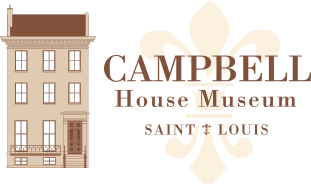
This week we’re going to try something new and we hope you like it. We are fortunate enough to have a copy of Hugh Campbell’s journal that he wrote during his voyage from his small village of Plumbridge, County Tyrone to the United States back in 1818. (Just to clarify, this Hugh is Robert Campbell’s older brother, not his son.) This document is unique in that Hugh kept meticulous notes throughout his trip, even down to listing his coordinates for each entry so you can essentially plot his path across the Atlantic.
With his dry wit and gift for storytelling, Hugh recorded the prevailing feelings of fear and loneliness on board (“I believe there is no period that emigrants feel more sorrow than commencing a wide sea voyage.”); embarrassing mishaps (naively being tricked out of his passage on one ship); daily life in the confines of a ship; his wonder at the sights of the new country; the birth of lifelong friendships that emerged from shared drudgery; and the humbling experience of living as a stranger in a country that was often hostile to the Irish. No doubt, Hugh eloquently captured what the vast majority of Irish were feeling as they left their family homes for new lives in the United States.
To share this amazing story — one, we might add, that often reads stranger than fiction — we are going to serialize it, publishing an entry or two every Friday. We will also include necessary footnotes, photos and images to make the story as accessible to modern eyes as possible.
To bring you up to speed before Friday, today we are sharing a biography of Hugh so you can put this journal in the context of his life narrative. Tomorrow’s blog entry will feature the memorandum Hugh included with the journal when he sent it back to Ireland for his family to read. The journal entries and appropriate notes and images will begin on Friday.
We hope you enjoy following along and reading this as much as we enjoy sharing this with you. This document is just one of the many treasures we have in our museum, and we hope to share more great finds like this. As always, if you have any questions about Hugh’s journal or the Campbells in general, please do not hesitate to contact us through our main website at http://stlouis.missouri.org/501c/chm/contact.htm
And without further ado, Hugh Campbell’s story…………..
Hugh Campbell has been consigned to relative obscurity in local history books, usually overshadowed by the wild adventures and wealth of his younger brother Robert. Though sharing Robert’s business acumen, integrity and work ethic, Hugh has been cast as the boring, upright and sanctimonious elder brother. This characterization is an unfortunate oversimplification of a thoughtful and complex man who was the true patriarch of a sprawling family separated by the Atlantic.
Born in 1797 in County Tyrone, Ireland, Hugh was the third child and second son in his family. Three more children followed, and Robert was the youngest. After Hugh’s father died in 1810, his will divided the three family farms among four sons. Though Hugh was given the prized Aughalane estate, he had to share it with younger brother James, and he was also charged with supporting the family and paying off his father’s debts. Hugh was thirteen years old. Hugh tried medical school in Edinburgh but dropped out after a year due in part to his tendency to faint in the dissection room. With few other options, he left Ireland in 1818 for America. Robert followed him four years later.

After arriving in the United States, Hugh lived most of his life on the east coast, living in North Carolina, Virginia, and ultimately settling in Philadelphia. Eventually becoming a prosperous merchant in his own right, Hugh married Mary Kyle, the daughter of his business partner, David Kyle. (Mary was a cousin to Virginia Kyle, who would later marry Robert Campbell in 1841.) In 1859, Hugh and Mary left Philadelphia amd moved to St. Louis into a house on the corner of Washington Avenue and 16th Street, just steps away from Robert’s home. Hugh and Mary had no children of their own, but they enjoyed a close relationship with their nieces and nephews. (This earlier blog entry speaks volumes about Hugh and Mary’s love for Robert and Virginia’s children.) In fact the children called Hugh and Mary’s home “the other house.” In St. Louis, the brothers continued their business pursuits together in the burgeoning dry goods business in the backdrop of the Civil War.
Hugh was active in the elite social and political landscape of the city, and he was appointed by President Lincoln to adjust claims against the military in the West. Throughout his life, he remitted money to his family in Ireland to ensure their comfort. Hugh took care of the tenants on his family’s property by sending them clothing, cash, flax seed and seed potatoes. When the potato crops failed during the Great Famine, he sent food. Hugh was equally generous with Irish who emigrated to the United States. Because of his charity and assistance to fellow countrymen, it is no surprise he was greeted with a hero’s welcome when he returned to Ireland on four separate occasions to visit.
Hugh died just six weeks after Robert, on December 4, 1879. His amazing trip across the Atlantic provided the experiences he recounts in the proceeding pages. The document’s value is twofold. First, it provides a detailed, first-person account of the Irish immigration experience in the early nineteenth century. Second, this diary proves that Hugh was not only an eloquent and introspective young man, but he was indeed just as daring and brave as Robert. And if it were not for Hugh taking these experiences with unflappable tenacity and good humor, we might never have heard the name Robert Campbell.
